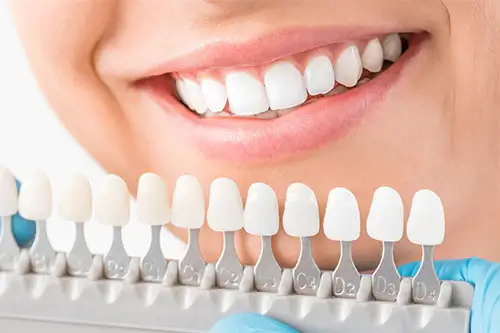Whether you’re seeking a permanent solution or a quicker fix, modern dentistry offers several innovative options that can help restore both the functionality and appearance of your smile. Let’s take a look at the latest methods available to replace missing teeth.
1. Hybrid Prostheses: The Best of Both Worlds
This method involves securing a fixed bridge or denture with dental implants placed in the jaw. These prostheses are particularly beneficial for patients who need to replace multiple teeth but don’t want the complexity of a full implant-supported bridge.
Key advantages of hybrid prostheses:
- Enhanced Stability: The implant supports provide greater stability than traditional dentures, reducing the need for messy adhesives.
- Improved Function: Hybrid prostheses allow for better chewing and speaking ability compared to conventional dentures.
- Aesthetic Appeal: These prostheses are custom-designed to match the natural teeth, ensuring they blend seamlessly into the smile.
This method is ideal for patients who have multiple missing teeth and seek a secure, comfortable solution without the full commitment of a fixed implant-supported bridge.
2. 3D-Printed Implants: Cutting-Edge Precision
One of the newest innovations in the world of tooth replacement is 3D-printed dental implants. Using advanced 3D printing technology, these implants are created with a high degree of precision, tailored to fit the exact dimensions of the patient’s mouth.
The benefits of 3D-printed implants include:
- Customization: 3D printing allows for a highly personalized fit that can accommodate each patient’s unique jaw and dental structure.
- Faster Healing: The precise fit often leads to a quicker recovery time compared to traditional implant methods.
- Cost-Effectiveness: With more efficient production processes, 3D-printed implants can sometimes be more affordable than traditional alternatives.
As this technology continues to evolve, 3D-printed implants offer an exciting new direction for those seeking a seamless and precise solution to tooth loss.
3. Zirconia Implants: A Stronger, More Aesthetic Alternative
Zirconia implants are becoming increasingly popular as an alternative to traditional titanium implants. Made from a ceramic material, zirconia implants provide an aesthetic advantage, especially in patients with thin gums or those who are concerned about the metal appearance of titanium.
Benefits of zirconia implants include:
- Aesthetics: The white ceramic material is more natural-looking and blends better with the surrounding teeth.
- Biocompatibility: Zirconia is known for its biocompatibility, making it less likely to cause allergic reactions or irritation.
- Strength: Despite being a ceramic material, zirconia implants are incredibly durable and resistant to fracture.
For patients looking for a more natural-looking implant or those sensitive to metals, zirconia implants offer an excellent alternative.
4. Mini Implants: A Less Invasive Solution
Mini implants are a more compact version of traditional dental implants and offer an option for patients who have a smaller jawbone or limited space for conventional implants. These smaller implants can be used to support dentures or crowns, offering greater flexibility in treatment.
Mini implants come with several advantages:
- Less Invasive: The procedure to place mini implants is less invasive and often requires less recovery time.
- Cost-Effective: Mini implants are usually less expensive than full-sized implants due to their smaller size and less complex procedure.
- Convenience: Mini implants can be used in areas with limited bone mass, providing an option for patients who might not otherwise qualify for traditional implants.
Mini implants are a great choice for patients who need a quick, cost-effective solution and are looking for a less invasive procedure.
5. Temporary Implant Options: Quick Fix, Long-Term Benefits
In some cases, patients may need a quick solution for tooth replacement while they await more permanent treatments. Temporary implants are a practical option in such cases. These temporary devices can be used to fill the gap while the patient undergoes further evaluation or waits for the bone to heal and strengthen for a permanent implant.
Key benefits of temporary implants include:
- Immediate Restoration: A temporary tooth can be placed within hours of the extraction, providing immediate aesthetic and functional benefits.
- Confidence: Patients don’t need to feel self-conscious about missing teeth while they wait for permanent implants.
- Ease of Transition: Temporary implants serve as a stepping stone to a more permanent solution, ensuring the patient has a comfortable process all along the way.
6. Bone Grafting: Preparing for the Future
Sometimes, patients who have lost teeth also experience bone loss in the jaw, making it difficult to place traditional implants. Bone grafting is a procedure that involves adding bone material to the jaw to encourage bone growth and create a more stable foundation for implants.
Advantages of bone grafting include:
- Improved Implant Success: Bone grafting can significantly improve the chances of implant success in patients with insufficient bone density.
- Long-Term Health: The grafted bone helps restore function and prevent further bone loss, which can benefit overall oral health.
- Versatility: Bone grafting can be combined with other dental procedures, including implants, for a comprehensive solution to tooth loss.
Conclusion
The field of tooth replacement has evolved tremendously, offering numerous options for patients who want to restore their smiles. From mini implants to zirconia implants and 3D-printed options, today’s dental technologies provide solutions that are not only functional but also aesthetically pleasing.
